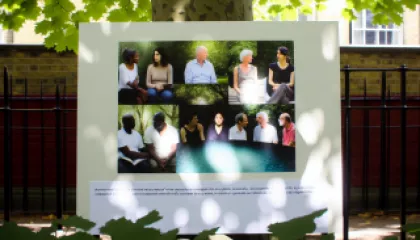The Path to Healing: My Insights on Recovering from Trauma
What does it mean to heal from trauma? It's a question that many people who have experienced traumatic events might ask themselves. As someone who has been through this journey, I believe healing from trauma is not about erasing the past or forgetting what happened, but rather about learning to live with the memories and the emotional scars in a way that doesn't hinder our growth as individuals.
My Personal Experience with Trauma
In my case, the trauma was a violent assault that happened during my teenage years. The event itself was horrifying, but the aftermath was even more challenging. I struggled with anxiety, depression, nightmares, and panic attacks for years after the incident. My life seemed to be spiraling out of control, and for a long time, I thought there was no way out.
Realizing that Healing was Possible
But, one day, something changed. I woke up and realized that I had a choice. I could either continue to live in the shadow of my trauma, or I could fight for my happiness. It wasn't an easy decision, and it certainly wasn't a quick fix. But it was the first step on my path to healing.
The Importance of Professional Help
One of the most significant insights I have gained throughout my healing journey is the importance of seeking professional help. Therapists, psychologists, and psychiatrists are trained to help people navigate through their traumatic experiences. They can provide tools and strategies to cope with symptoms of trauma, such as anxiety and depression.
“In the process of healing, the objective is not to forget your traumatic experience, but to make peace with it.”Dr. Peter Levine, renowned trauma expert
Embracing Self-Care
Another critical aspect of my healing journey was learning to take care of myself physically, mentally, and emotionally. This included regular exercise, a healthy diet, adequate sleep, and relaxation techniques like meditation and deep breathing exercises. It also meant setting boundaries, saying 'no' when necessary, and prioritizing my needs.
Understanding that Healing is not Linear
Healing from trauma is not a linear process. There are days when you feel strong and empowered, and there are days when the pain feels as fresh as ever. It's crucial to understand that both are part of the healing process. The key is not to get discouraged during the difficult days but to recognize them as opportunities for growth and resilience.
Building Resilience
Resilience is the ability to bounce back from adversity. It's not something we're born with, but something we develop over time through our experiences. In my case, my trauma has taught me resilience. It has taught me that I can withstand hardship and come out stronger on the other side.
The Power of Sharing
One of the most therapeutic parts of my healing journey was sharing my story. It was terrifying at first, opening up about my deepest pain and vulnerabilities. But every time I shared, I felt a little lighter, as if I was shedding a small piece of the heavy burden I had been carrying.
“There is no greater agony than bearing an untold story inside you.”Maya Angelou, renowned author and poet
Connecting with Others
Sharing my story also allowed me to connect with others who had experienced similar traumas. Together, we found strength, understanding, and a sense of community. Knowing that I was not alone in my pain made a significant difference in my healing journey.
Conclusion
Healing from trauma is a unique and personal journey. It's about finding the strength within yourself to face your pain, learning to navigate through it, and ultimately, growing from it. It's about realizing that you are not defined by your trauma, but rather, how you choose to respond to it. It's a long, challenging road, but I can assure you, it's worth every step.






